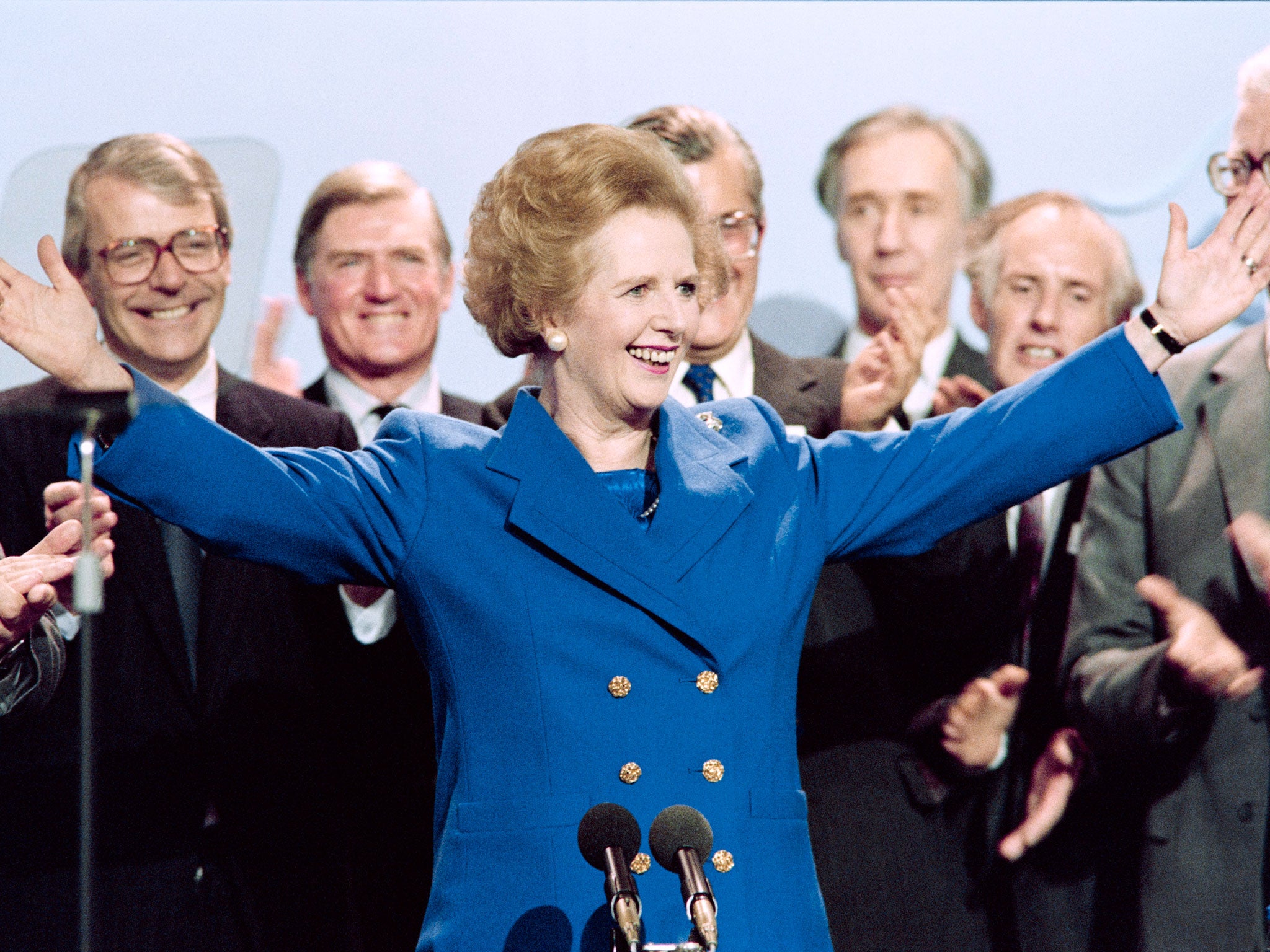Thatcher probably wouldn't have wanted her clothes hung in the V&A anyway
You never hear a man praised for his power dressing. Only for his power

The John Lewis man on the Moon is here, so it must be nearly Christmas – a time of spending, eating, drinking and all‑round unnecessarily lavish gestures. Which is the only possible explanation for what else happened this week: a grand kerfuffle over Margaret Thatcher’s wardrobe.
Some time ago, it is claimed, London’s V&A museum was offered the late prime minister’s clothes and accessories but “politely declined” on the basis that it focuses on “acquiring examples of aesthetic or technical quality”. The museum says nothing more than an “informal conversation” took place. Polite it may have been, but it’s still a thinly veiled barb from an institution that once saw fit to display Kylie’s gold lamé hotpants bought from Oxfam for 50p.
So the collection of 300 items, from Thatcher’s blue velvet wedding dress to her Launer handbag, is due to be auctioned off at Christie’s on 15 December, just in time to make very poor Christmas presents for unsuspecting wives. Or maybe not.
Appalled at the prospect of a pussy-bow blouse diaspora, the Margaret Thatcher Centre at the University of Buckingham stepped in and set up a slightly hysterical “emergency appeal” to save Thatcher’s houndstooth and pearls “for the nation”. As is often the case with these cultural mercy missions, the question of whether or not the nation wants them never came up.
Overnight, the appeal raised £100,000 from members of the public. That is an awful lot of money for some old suits that most families would simply bag up for the charity shop. Just who are these donors? One can only assume they haven’t seen what’s happening on Lesbos, or that they’ve already stockpiled all the Waitrose puddings, Bailey’s and designer socks they might need next month and are looking for something else to spend their cash on.
Though Thatcher must be jigging in her grave at this entrepreneurial spirit, it seems that the V&A might still change its tune. A spokesman has said that as no formal offer was made; “if we were approached today it is perfectly possible that discussions might develop in a different direction”.
I do hope they don’t. Of course these items have historical significance, by dint of their wearer’s own position in history. Certain items – like her Despatch Box, or the suit she wore to walk into 10 Downing Street for the first time – should be kept for posterity. But if the V&A doesn’t want them, one can understand the reticence. The museum receives 60 per cent of its funding from the Department for Culture, Media and Sport; the state stepping in to save the Iron Lady may be an irony too far.
I’ve never understood the appeal of costume exhibitions anyway. They are the least inventive of all shows – always the same, darkened rooms dotted with static items hanging in artificially bright glass cases like unconvincing ghosts. The thing that makes them interesting, that makes them live, is glaringly, fatally absent. That said, the V&A does very well out of them; Alexander McQueen and David Bowie were two recent mega-hits – but each of those shows used clothes to contextualise a particular person’s cultural influence.
The museum would struggle to do the same for Thatcher. There is something a little banal about arguing over the fate of the first female prime minister’s shoes. The mark she left on this country has less to do with block heels and boxy jackets than with deregulated banks and decimated social housing. Much has been and will continue to be, made of her enduring style: the way this daughter of a dressmaker wielded those angular handbags and shoulder pads like womanly weapons, her famous mistrust of trousers, the steely heart beneath the silky scarves. She talked about it herself, too. But the idea that the suits she wore had any meaning or influence beyond the most superficial is fanciful at best.
Of course Thatcher’s leadership look lives on in the memory: she was a woman. Britain had never seen her like running the country before (and hasn’t since). But the ultimate power dresser? Now there’s an idea that should be consigned to the archives. You never hear a man praised for his power dressing. He’s too busy just being powerful – as was Thatcher – and her legacy will live on whether or not her blouses are hung up and gawped at or not.



Join our commenting forum
Join thought-provoking conversations, follow other Independent readers and see their replies